Eight Things You Should Know Before Climbing Mount Kilimanjaro
Ok so I have been getting a lot of questions about my Kili trek and figured that this meant I should write an in-depth post and compile all my answers.

Before I start, a few important things to know: I am from Colorado and am quite active especially with outdoor activities (and especially hiking!) so I had a pretty good fitness base when I did the Kilimanjaro trek. Start here for more on our journey
1: Almost anyone can summit Kili
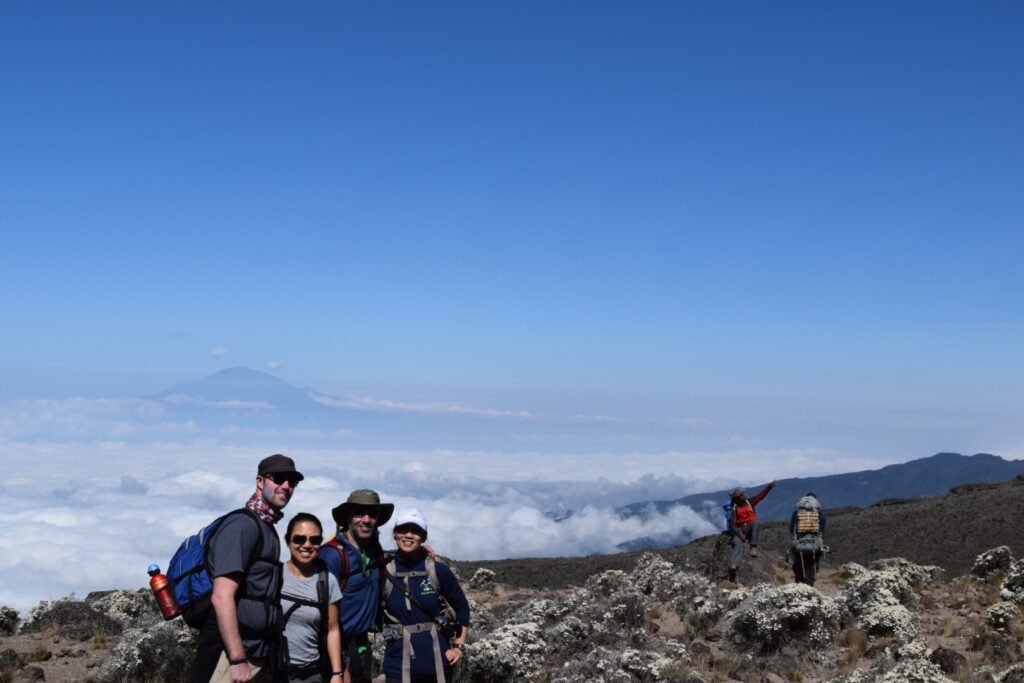
The number one thing I get asked about is how hard was it/can I as (insert descriptors in here) really do this? So you want to climb Kilimanjaro? Ok, great! Let’s start with the “climb Kili” nomenclature that even I use. It just sounds impressive but in reality, you are summiting a very high mountain via a hike not a climb. {Maybe it is being from Colorado and the importance we place on categorizing our 14ers but it is always a distinction that I tell people} It is not technically difficult and you are lucky enough to be carrying only a day pack (and even then you can hire a day pack porter!). So yes, for most people, this is completely doable.
While we were on the mountain, we saw/met many people who were in their 50’s, 60’s and beyond who successfully summited. Funny enough, there was an older man that must have smoked 5-6 cigarettes while we were waiting at the gates for our tour operators to finish all the paperwork, etc (and continued to smoke like a chimney on the trek – they took the same route as us) and he made it to the top!
But you say that you have heard that the success rate for reaching Uhuru Peak (which is the summit of Kilimanjaro) is actually surprisingly low. I was amazed by that fact when I first heard it but it leads me to the second insight I had.
2: But the right type of conditioning is key
But after reading through most tour providers suggested course for physical preparation, I am not surprised about the low success rate.
Did I confuse you now? Sorry. Again, it is not technically difficult but it is a multi-day HIKE. So walking is not going to prepare your body for this trek.
I will never understand why companies tell people to prepare for this by walking! Your body must get used to the incline (and decline) that hiking entails. Luckily for our group, we live in Colorado and were able to prep by hiking a lot and tackling 14ers (peaks over 14,000 ft high).
So get out and hike if you can but if not you have to prepare with inclines – go outside and run the steepest hills you can or if you’re in the gym, the best equipment to use would be the stairclimber. If there isn’t one, set your treadmill to high inclines!
It is important to be aerobically fit and to prepare your feet, joints and muscles so I would suggest some strength training as well.
And as importantly, get yourself used to multiple, consecutive days of activity. You will be doing a MULTI-DAY hike so you should be used to working out multiple days in a row. Each individual day on the mountain has about 4-8 hours of hiking (though at a slow pace) and if you are not used to being active every day, the cumulative hikes would make summiting quite difficult. Remember the chain smoker? Well he hiked often and his body was used to the smoking and being active. That’s why he was able to go on because it was normal for him. Not suggesting that you take up smoking at all but trying to illustrate the importance of conditioning your body.
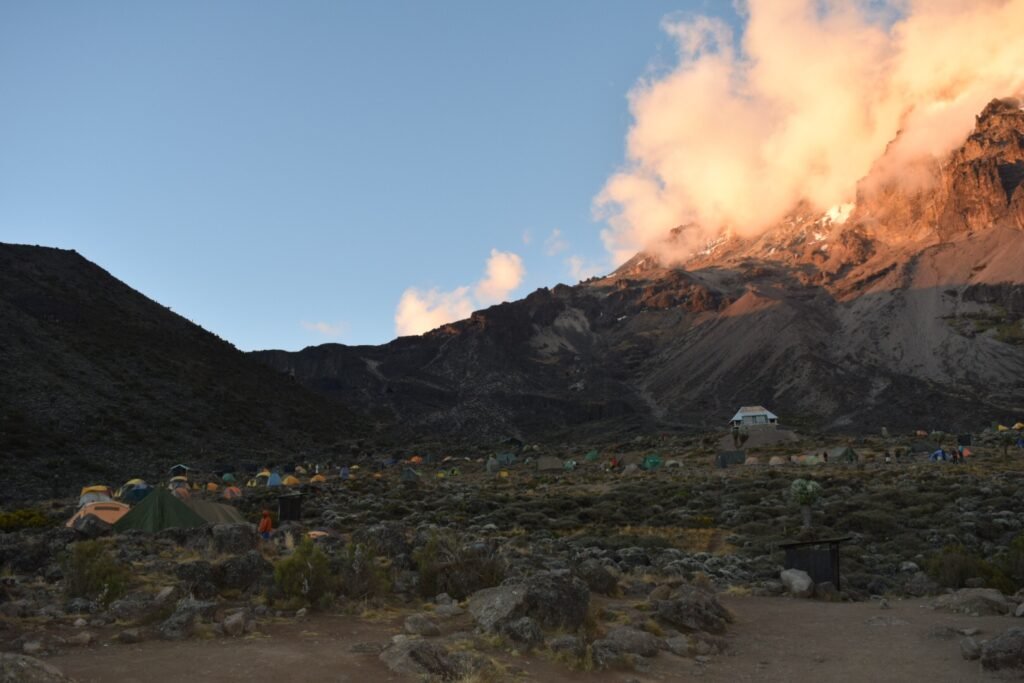
3: Be prepared (and this includes mentally)
The tour company will send you a list of what you need for the trek and just know that you will be hiking in a variety of weather conditions and terrains. So try out your stuff especially your boots before hand!
Questions you have been too embarassed to ask:
Let’s talk about the stuff that you may want to ask but didn’t know who to ask as it’s mildy embarrassing wanting to know or maybe didn’t even think about until now that I brought them up.
- Showering or lack there of: You can opt for a company that will provide you with “army showers” on the trek or just bring some baby wipes. We would wipe ourselves down daily with a couple of wipes and I washed my very long hair a few times (they gave me bowls of warm water) and it was fine. I will admit that I was really looking forward to a hot shower when it was all over but it wasn’t too bad – just keep reminding yourself that you are scaling one of the seven summits after all!
- Potty breaks while you hike: Staying hydrated during physical activity is always a good idea but you may find yourself taking lots of potty breaks. The team gets used to it (trust me, I know as I have an extremely small bladder myself!) and was constantly stopping. If you’re male, nothing to add of importance to you but if you’re female – 1. learn how to pee in the wild without wetting yourself or your clothes and preferably before this trip and 2. bring a small bag to put your used TP in and discard at the campsites!
- Peeing at night: I have to get up multiple times nightly while at home so we brought along a container that I could use instead of having to go outside to the toilet. It gets rather chilly at night and this saved me from having to put on boots, jackets, headlamp, etc just to go pee. If you have never peed into a container, another thing you should practice before your trip! And if you have to pee, just do it because you won’t be able to go back to sleep until you do.
- Solo woman – this I cannot speak to personally as I was with a group of four (consisting of people I knew quite well) but the trek that our outfitter completed prior to ours consisted of one solo woman so I would say yes completely doable.
- Most difficult thing about the hike would be the mental part – if you run especially marathons, you will understand this – when you “hit the wall.” When you physically can go on but your mind is telling you, no you cannot. Learn to push against it – again this is not the time to have your first experience/try on the mountain. The midnight ascent is by far the most difficult portion of the hike and between exhaustion and probable (and hopefully mild) AMS, you will want to stop. This is where being prepared will help – all the conditioning has put you in a position to succeed. Body over mind – one step at a time, one foot in front of the other and yes everyone you hear cheering you on is right – you are almost there. Remember to pay it forward on your descent and encourage those making their way up!
- The descent may be/probably will be tougher for you than the ascent. Combo of cumulative days of hiking and stress on feet (especially toes) and joints on the decline. But if you are able to get practice hikes in, they should prepare you for this. And this is why they stress hiking poles – learn how to use them before you get on the mountain.
4: Cost can be measured in many ways
There are so many choices for outfitters on Kili! And the range of cost is quite vast. We had quotes from $1,500 – $6,000(USD) (and I have heard it can be even pricier) per person! First off, there is no way around it that this will be a pricey experience but you have to figure out a sweet spot for yourself.
I loved Taraji Kilimanjaro myself as did everyone in our group. They were not the cheapest nor were they near the most expensive. They were recommended by my sister’s friend and were the perfect fit for us. We had hot, nutritious but most importantly really tasty food during the trek and that made it really enjoyable. A lot of outfitters give you a cold bagged lunch but we had lovely sit down freshly prepared hot meals. You are putting a lot of demands on your body and I think it’s important to keep it well nourished (but I also live/love to eat!). We did opt for a value conscious option (the tents were not as high and no showers) but did get the private privy. Best decision for sure! I never ventured to the long drops but the boys did and they validated the expense was worth it. My sister and I paid for a day pack porter but my guy was so new and I was so worried about his health, I ended up carrying all my stuff so that wasn’t the best decision. But my sister’s porter was amazing on many levels so it leads me to my next point.
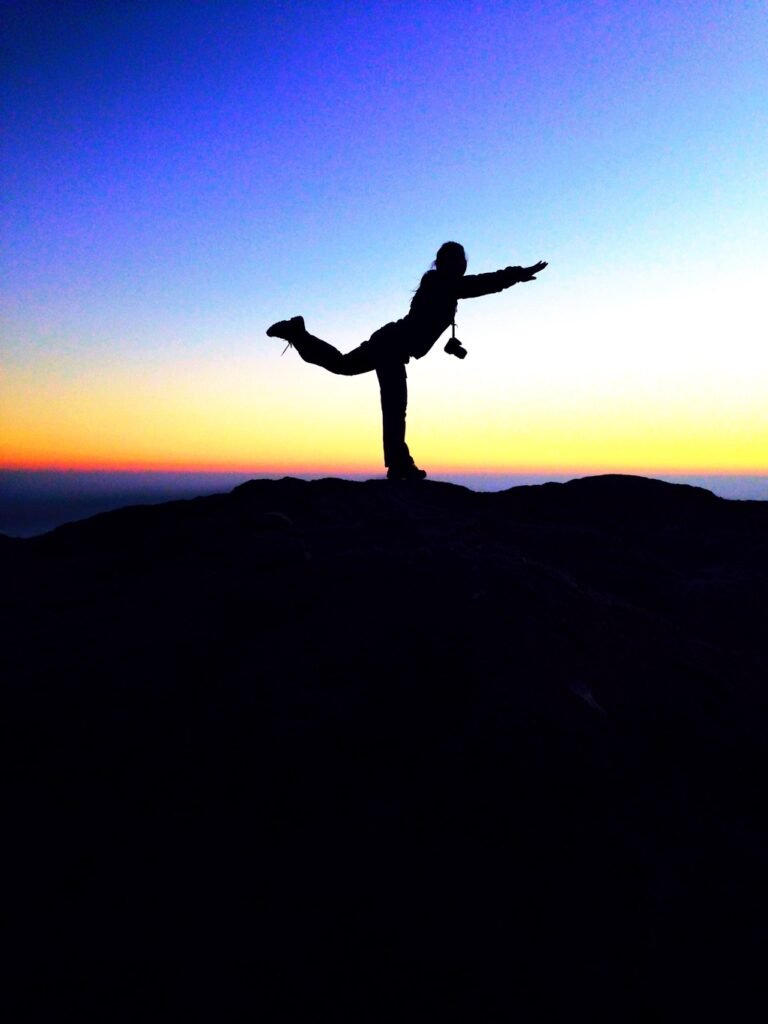
5: Know thyself and listen to your instincts but also heed the guides
If you think that it may be difficult to summit even with all your training and conditioning, get a day pack porter if you need. Or if you need the pace to slow down, talk with your guide. They should be there to help get you up on the summit and should be looking out for your best interest. If you want to go faster, probably not going to happen. If it does, don’t tell me about it! I like to hike quickly and without too many breaks…
For me, I wish that I would have listened to my body and taken Diamox right when we got to Barufu Camp as I started feeling terribly and didn’t take any before we started the ascent. Not sure it would have alleviated all my AMS symptoms but maybe I could have spent more time at the top. However that brings me to my next point
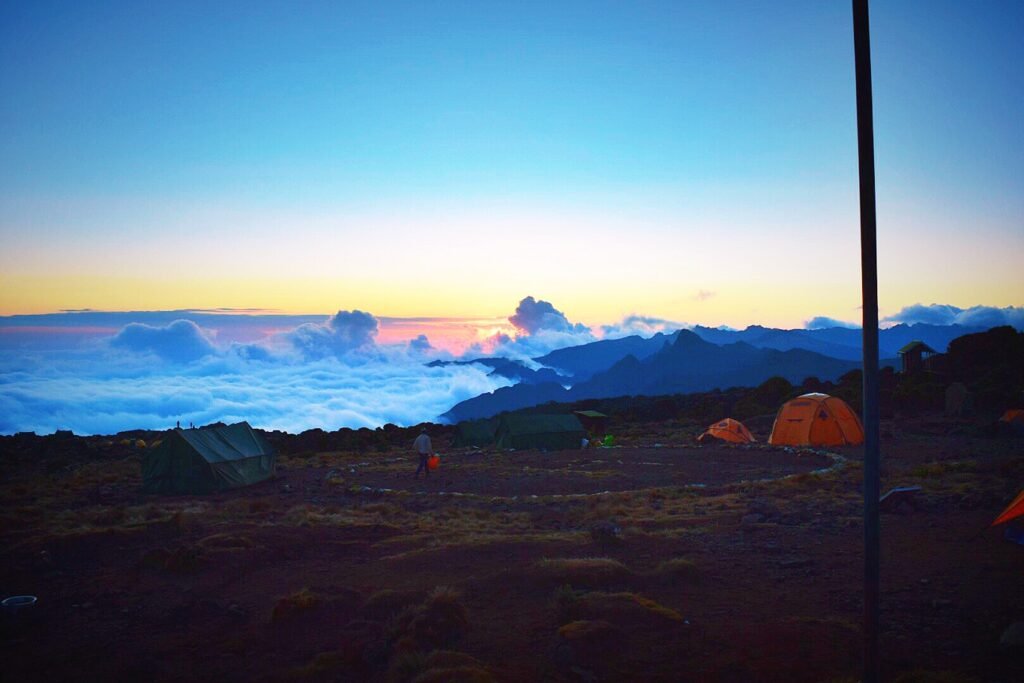
6: Respect the mountain:
You are attempting to summit and bring your body to an elevation of 19,341ft/5,895 m. The sad truth is that even being physically fit and conditioning yourself may not be enough to avoid acute mountain sickness (AMS.) So I think being physically/mentally prepared is important because you don’t want that to be the reason why you didn’t summit.
However, the body will react it wants in relation to altitude ~ being physically fit does not do anything to help prevent AMS. Going slowly and giving yourself time helps acclimate you but listen to your body. AMS has a wide spectrum and at one end, it is quite dangerous and deadly and your outfitter should be watching you to ensure your safety.
Luckily, my AMS was not too severe (and having a sister that is a doctor that helped with the diagnosis made me comfortable with continuing) and I was able to make it to Uhuru Peak. But I also knew that staying at the summit for an extended amount of time was not a good idea and that I needed to get to a lower elevation and ASAP. That was more than a bit disappointing but respect the mountain (including not leaving trash on the trail – ugh seriously!!)

7: Enjoy the journey:
And where I would say that I wish that I would have done a better job of while there. Try to be present in the moment and not rush through the hike – take the time to really appreciate nature around you!
Get to know those around you especially your team. I did the climb with people who I was close to as a small, intimate party of four and we had such an amazing time. And we got to know our team and they taught us Swahili and made the trek that much more enjoyable. We passed by many others who were surprised by our Swahili (guides, teams and hikers ) and it made us rather sad. You are hiking for such long, slow times might as well make the most of it – aren’t the connections that are made traveling part of what makes it so amazing?
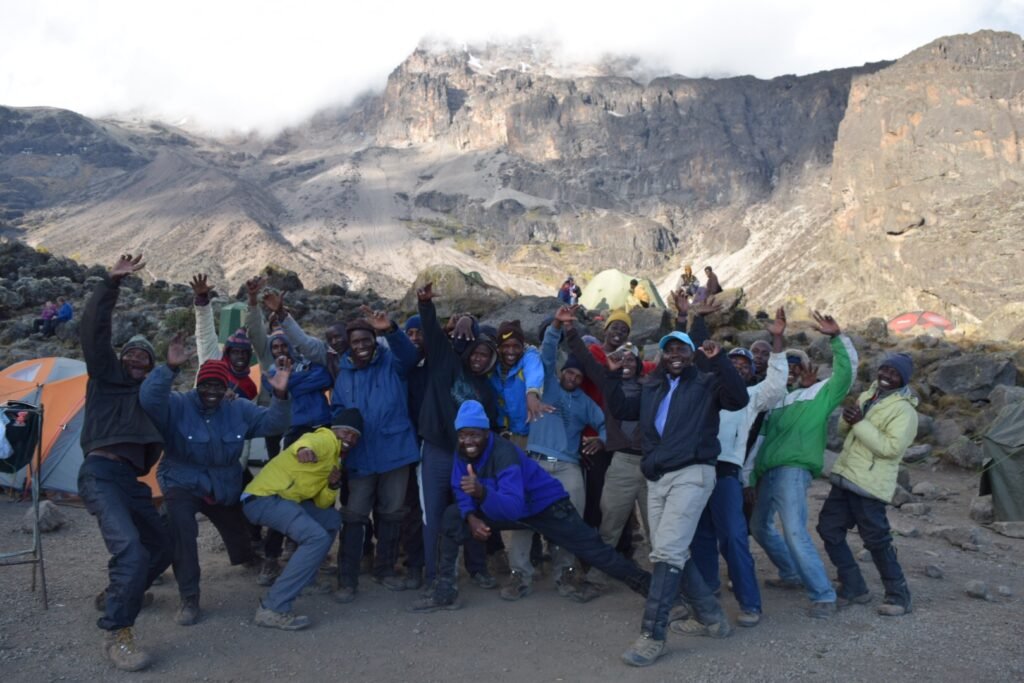
8: Your porters and team are the key to your success and should be celebrated as such.
Prepare to tip them well as they do all the hard work – as you are carrying only your day pack, the porters are hauling the rest of your stuff + the food + tents + dining tent/table/chairs + all the other stuff that makes it a rather cushy, comfortable hike.
In addition, we had read that we should bring chocolate but we did not bring enough.
We had a team of 25+ for our group of four! The head guide always ate with us but the porters definitely were not fed as well as we were. The team was always so excited for the chocolates – and the energy bars we never needed. If you have any hiking gear that you are thinking about giving away, bring it. At the end of the trek, the team is given that gear and this how they come by most of their stuff. Most of our team had decent stuff but we saw lots of porters with holy sneakers, beat up/threadbare clothing – it’s crazy!
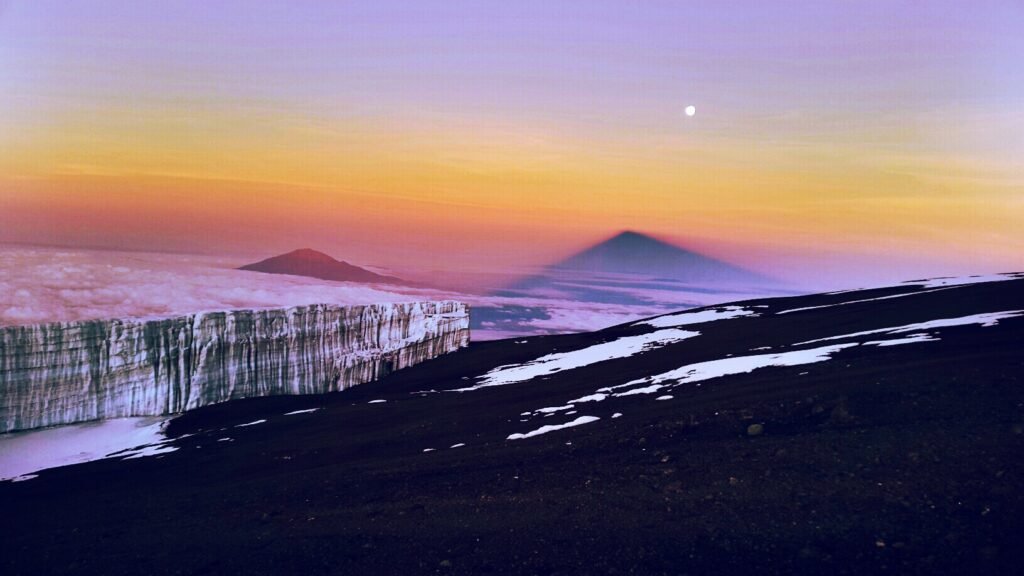
After seeing the IMAX movie so long ago, Kili had haunted my dreams. I am so grateful that I was lucky enough to have been able to see the snows of Kilimanjaro before they disappear forever and completed the journey. I hope that you are also able to experience this truly awe inspiring trek!
Have you done this trek and would you add anything? Or was there something that this post didn’t address that you are curious about? Would love to hear from you!
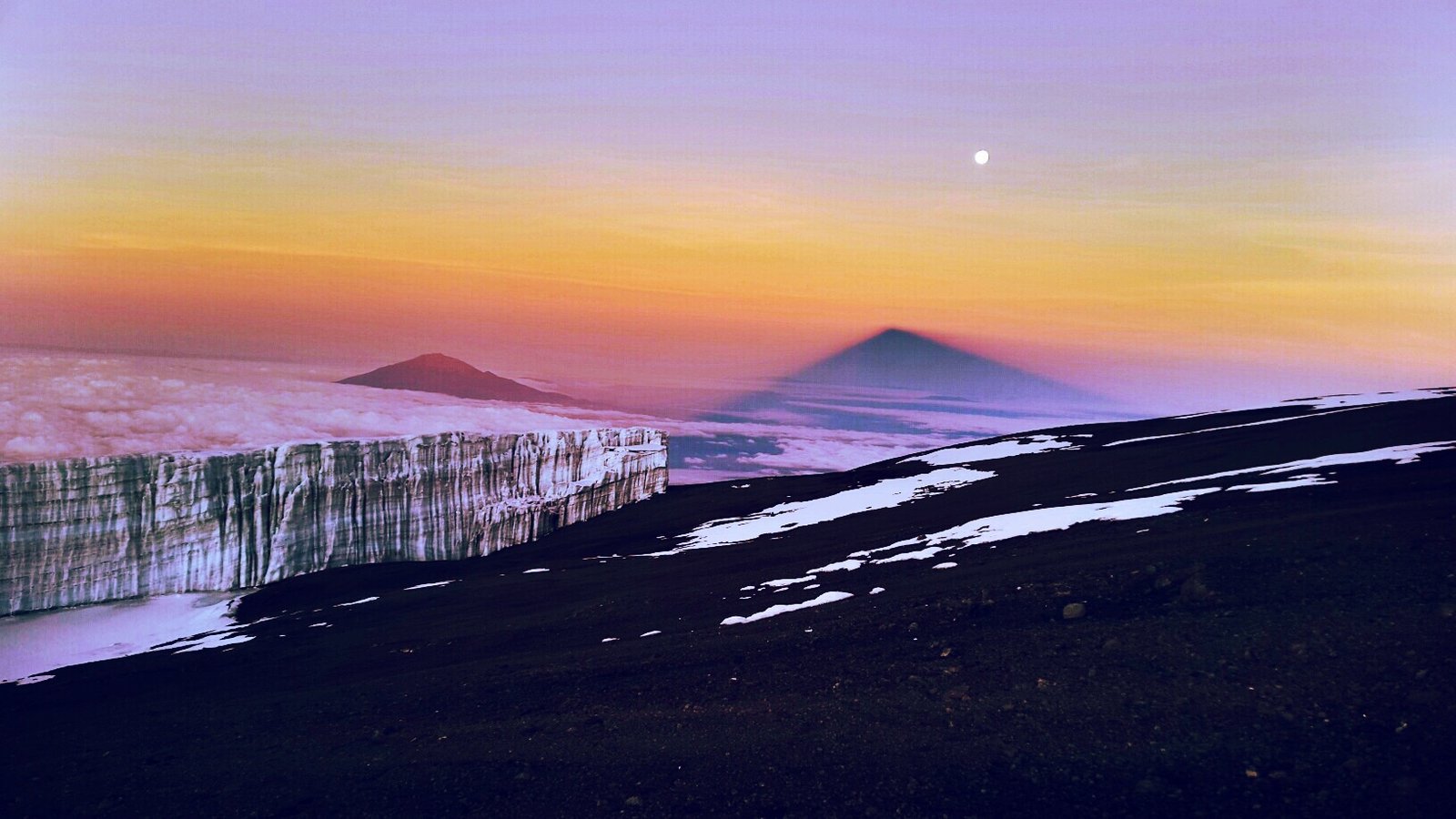
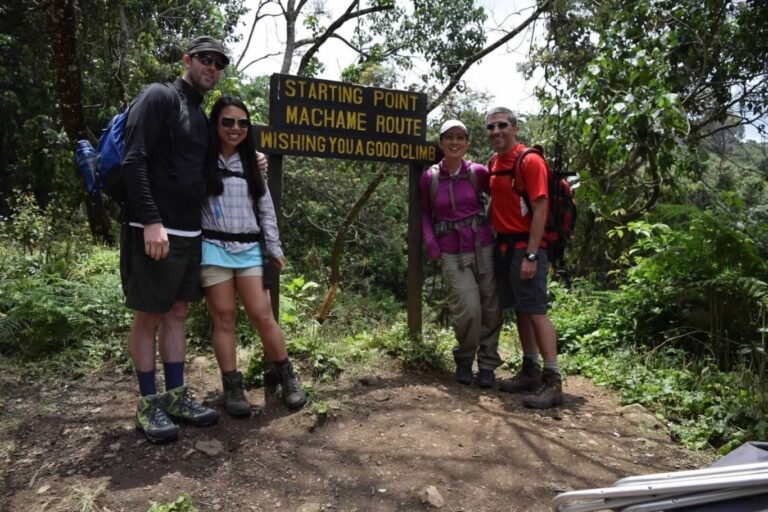
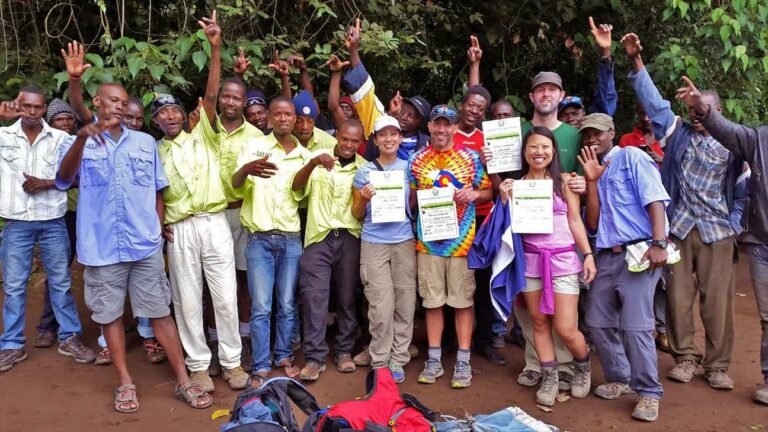

Thanks for sharing. I read many of your blog posts, cool, your blog is very good.
when did you do this? is this still relevant today?
Thanks for sharing. I read many of your Kili blog posts, cool, your blog is very good